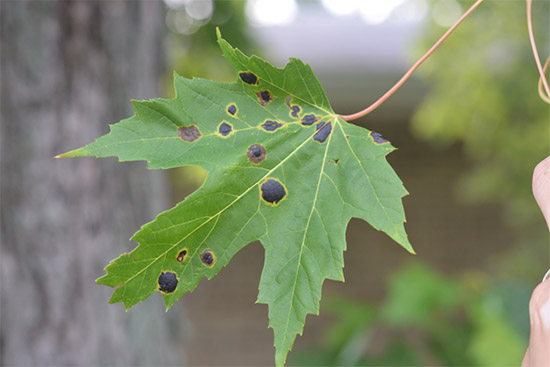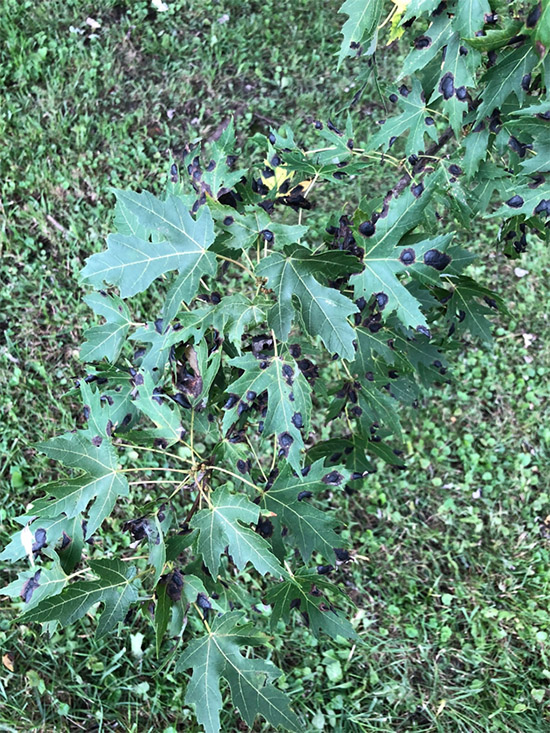Issue 15, September 12, 2018
Tar Spots of Maple
Tar spots have been evident on many species of maple. The disease has been especially widespread in the northern portion of the state. Several different fungi in the genus Rhytisma cause this disease. Tar spot results in raised, black spots on the upper surfaces of affected leaves. The symptoms are distinct, allowing for easy field diagnosis.
The first symptoms appear in mid-June as small, pale yellow spots. By mid-July, the yellow spots expand and a thick, raised, black stromata starts to form within the spot. By late summer, affected leaves appear as if they splattered with black paint or tar, hence the name tar spot. When severe, the disease may cause some premature defoliation. Fortunately, the disease rarely affects an established tree's growth and development.

Tar Spot on Silver Maple

Tar Spot on Silver Maple
The fungi that cause tar spots overwinter on infected leaf debris. In the spring, overwintering fungal fruiting bodies ripen and eject spores. Wind then carries the spores to nearby developing leaves of susceptible hosts where the infection occurs.
Tar spot outbreaks are relatively infrequent. Trees that are damaged on an annual basis tend to be located in moist, sheltered sites that provide an ideal environment for the pathogen. Fortunately, injury resulting from tar spot infections is mostly aesthetic and rarely affects the overall health of the tree. The first step in disease management is to rake and destroy leaves in the fall or early spring. This practice will help reduce spores capable of causing new infections. Fungicides applications are rarely warranted. When justified, fungicides containing the active ingredient Mancozeb (Fore 80 WP or Protect DF) or Copper Hydroxide (CuPro 500) can be used to protect newly developing leaves. Begin sprays when the leaf buds are opening and re-apply twice more at 10-day intervals. (Travis Cleveland)
Author:
Travis Cleveland